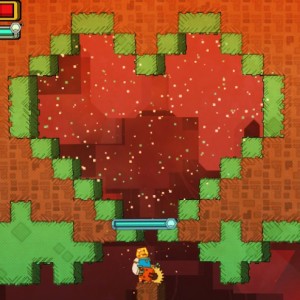 PixelJunk‘s Nom Nom Galaxy is a hard game. It’s a well-crafted resource-gathering and automation game in the vein of Terraria or Minecraft, but with a focus on factory production and automation. It’s hard because it’s far too complicated.
PixelJunk‘s Nom Nom Galaxy is a hard game. It’s a well-crafted resource-gathering and automation game in the vein of Terraria or Minecraft, but with a focus on factory production and automation. It’s hard because it’s far too complicated.
One of the classic problems of game design is the dominant strategy. A dominant strategy occurs when one way to play the game is so much better that it becomes the only option a player should pursue. The simple solution to a dominant strategy is to add a complicating factor that acts as a tradeoff, weakening the strategy and leading to interesting player decisions.
Nom Nom Galaxy, however, goes through this cycle a few too many times. Dominant strategies are complicated by challenges that can be overcome with strategies that are further complicated by new challenges. The end result is a frantic, frustrating time that keeps me from experiencing the joy of mastery.
Continue reading Overcomplexity in Nom Nom Galaxy
 A big secret of tabletop RPG design is that roleplaying games play themselves. Get the right group of people together and they’ll have fun telling a good story, regardless of which edition of which game they’re playing. The hard parts of RPGs are things the designer can’t control: social dynamics.
A big secret of tabletop RPG design is that roleplaying games play themselves. Get the right group of people together and they’ll have fun telling a good story, regardless of which edition of which game they’re playing. The hard parts of RPGs are things the designer can’t control: social dynamics.